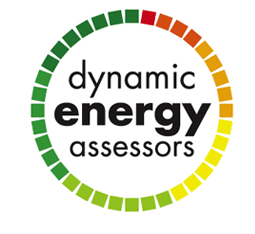the process we use
Latest entries from the Blog:
- BREEAM Very Good for development in London Borough of Southwark, SE5
- Energy Strategy for a 27 unit change of use in Lewisham
- Energy Strategy Statement for 59 dwellings in Slough
- 50 unit new housing project in Harwich
- BREEAM Very Good and supporting expertise in Ealing, W5
- Carbon Life Cycle Analysis for London Borough of Richmond-upon-Thames
- New building to meet code level 3 in Wandsworth
- Successful planning permission for Orangery in Buckingham
- Planning challenges in Kensington & Chelsea
- Planning permission for glazed extension in Tring
- Local Authority regulations met for new Conservatory in Aylesbury
- Dynamic Energy Assessors provide multiple SAP calculations for client near Redhill
It’s quick and easy with just three simple steps. Here’s a guide to what usually happens:
Step 1
Contact Us for a no-obligation conversation. When you proceed, we’ll ask you for details of the property, building access (such as location of keys and security considerations), your contact details, we’ll organise payment, how we will deliver the report/certificate and agree a convenient time for the assessment.
Step 2 for Code Assessment
Code assessment has 3 stages:
- The pre-design stage is a consultative exercise with our clients to identify options, impact of these options, thus allowing the most effective choice of design to be chosen
- Design stage assessment is a worktop exercise using design plans
- Completion assessment requires one or more site visits depending on size and complexity of the development
A qualified inspector will ensure code complience.
Step 2 for Commercial Building
A qualified inspector will assess the buildings fabric, heating, lighting, ventilation and any relevant sustainability features.
An assessment will vary in time taken: a small High Street unit around 2 hours; larger multipurpose buildings with many areas of differing use (zones) may take considerably longer
Step 2 for Domestic Dwelling
A qualified inspector will assess the interior and exterior of the property.
An assessment takes around 20-45 minutes
Step 3
We check and balance the information that’s been gathered against the Government database, generate the certificate/report and deliver it to you quickly under our fast and efficient guarantee.
What the code assessment is looking for
The dwelling meets the sustainability requirements of the local authority. Within the nine defined categories: Energy & CO2 Emmissions; Water; Materials; Surface Water Runoff; Waste; Pollution; Health & Wellbeing; Management and Ecology there are mandatory and tradeable requirements. Providing all the mandatory requirements have been met any credits associated with tradeable requirements may be chosen. There is flexibility of scope to achieve a cost effective implementation
What the energy assessment is looking for
We are looking for the volume of air that requires heating, how this and the water is heated, where heat is lost and what actions have already been taken to reduce the heat loss.
The commercial assessment is far more complex – whilst it encompasses all of the relevant domestic assessment parameters it differs by also detailing zones of use, daylight coverage, thermal capacity of internal walls, glazing, floors & ceilings, a wide varity of lighting, HVAC and the specifics of a range of sustainable solutions i.e. Solar, Photovoltaic, Wind, Community Heat/Power, etc.



